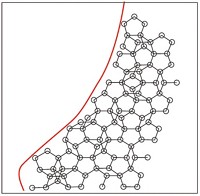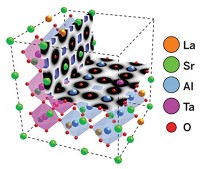Advertisement
Grab your lab coat. Let's get started
Welcome!
Welcome!
Create an account below to get 6 C&EN articles per month, receive newsletters and more - all free.
It seems this is your first time logging in online. Please enter the following information to continue.
As an ACS member you automatically get access to this site. All we need is few more details to create your reading experience.
Not you? Sign in with a different account.
Not you? Sign in with a different account.
ERROR 1
ERROR 1
ERROR 2
ERROR 2
ERROR 2
ERROR 2
ERROR 2
Password and Confirm password must match.
If you have an ACS member number, please enter it here so we can link this account to your membership. (optional)
ERROR 2
ACS values your privacy. By submitting your information, you are gaining access to C&EN and subscribing to our weekly newsletter. We use the information you provide to make your reading experience better, and we will never sell your data to third party members.
Materials
A Glimpse Of Silica In Motion
Researchers image atomic dance in two-dimensional glass
by Bethany Halford
October 14, 2013
| A version of this story appeared in
Volume 91, Issue 41
The structure of silica glass has been something of a mystery to scientists. Because of the disordered, amorphous nature of the material, researchers can’t construct a picture of its atoms by using X-ray crystallography as they can with bulk crystals. Instead, an international team led by David A. Muller of Cornell University and Ute Kaiser of Germany’s University of Ulm devised a high-resolution transmission electron microscopy (TEM) method to get an atomic-scale glimpse of this material in motion and used it to study sheets of glass just two atoms thick (Science 2013, DOI: 10.1126/science.1242248). With that technique, the researchers recorded images of the glass as it deformed upon changing from solid to liquid. The TEM images and video reveal “a complex dance” of silicon and oxygen atoms, according to the team. Ring structures open and close. Atoms swap places. The results will likely help scientists create a better picture of the atom dynamics in amorphous materials, which are ubiquitous. Silica glass, for example, can be found in semiconductors and optical fibers.





Join the conversation
Contact the reporter
Submit a Letter to the Editor for publication
Engage with us on Twitter